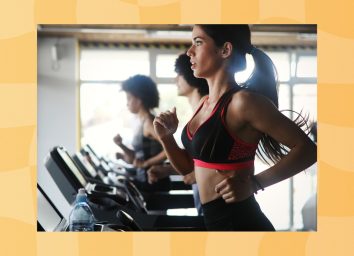How to Do the 'Stomach Vacuum' Exercise to Strengthen Your Core

Sculpting a strong and toned core is a popular fitness goal many set their sights on. Your core consists of the muscles in your midsection that provide stability to your pelvis and spine. Beyond aesthetics, a strengthened core can enhance your posture and fitness performance and help you avoid exercise injuries. There are many workouts you can do to boost your core strength, including something called the "stomach vacuum" exercise. Read on to learn all about this exercise and its benefits. And when you're finished, don't miss out on these 10 Ways To Maximize Your Walking Workout for Faster Weight Loss.
What is the "stomach vacuum" exercise and how do you do it?

The stomach exercise is a method that calls for being mindful of your breath and abs, explains Evan Betts, NASM CPT, PPSC, C4 Energy Brand Ambassador. "While you can perform the exercise sitting or lying down, it is most commonly done while standing," Betts notes. "This exercise can be done by anyone but has been made most famous by Arnold Schwarzenegger and the bodybuilding world."
The stomach vacuum is pretty simple to perform, however Betts points out that some may find it uncomfortable. Begin by standing, sitting, or lying down. When you're comfortable and ready, take a deep breath in through your nose as your lungs inflate. Then, exhale as much of that air as you're able to.
"Once empty, try pulling your abdomen toward your spine as if someone had a string attached to your navel," Betts instructs. "The shape of the vacuum is tight and narrow at the bottom of the abdomen, and stays that way up until your ribcage."
Your goal should be to hold this "contracted" position for around 10 to 20 seconds, resting in between for three to five rounds in total.
How can the stomach vacuum exercise strengthen and tone your core?

The stomach vacuum is beneficial for core strength because it fires up a deeper layer of muscles known as the transverse abdominis. "Strengthening these integral muscles will help with core stability, posture, and general core strength," says Betts. "As you know, improved posture helps improve postural ailments associated with postural deviations (ex: low back pain) better digestion, and improved motor function."
As Betts points out, this exercise can also help speed up your digestive system; it's a great one to do before or after eating. "When we think of alignment, we think externally. Don't forget the insides," Betts says. "Better alignment also includes your organs, and if your organs are better aligned and not compressed, then food and excrement can flow better as well."









